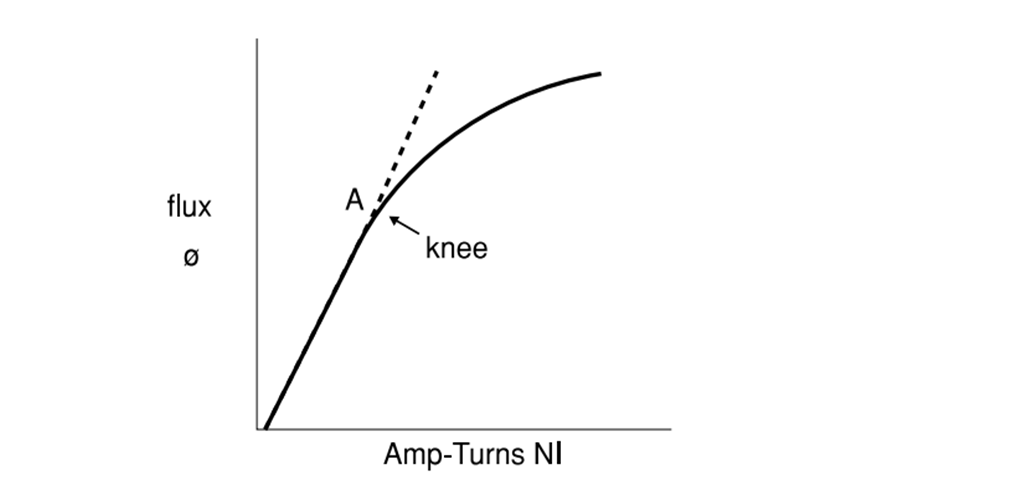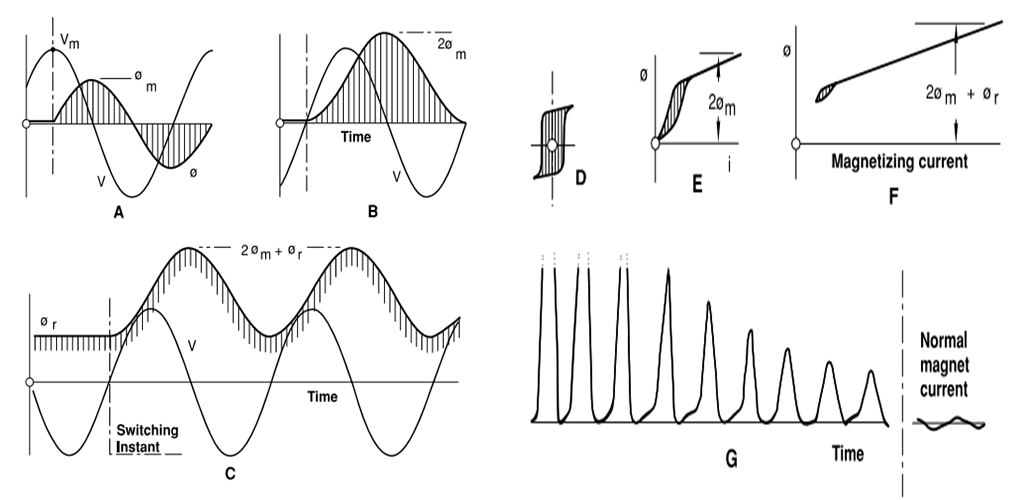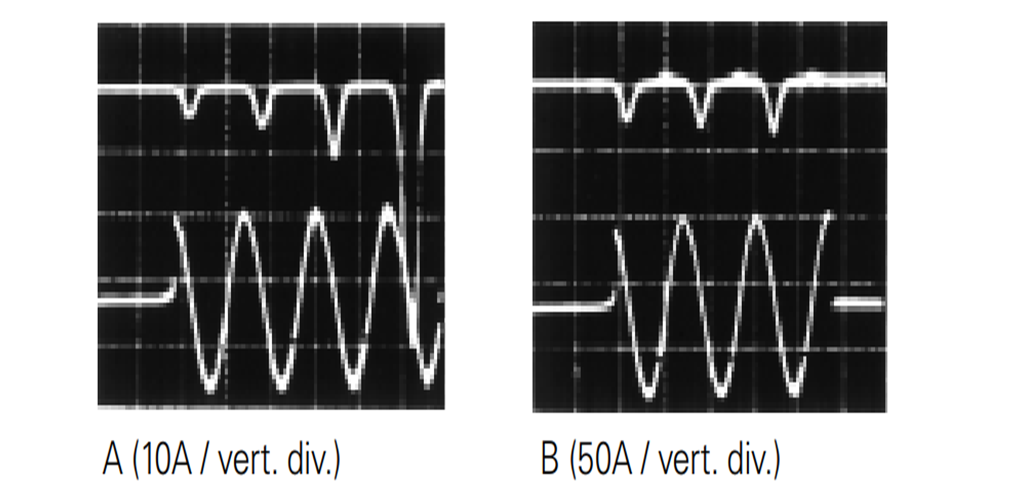Managing Inrush Currents
A zero-crossover solid-state relay may be the worst possible method of switching on a transformer or a highly inductive load. Evidence1 has come to light that zero-crossover turn-on of such loads can cause a surge current of perhaps 10 to 40 times the steady state current, whereas turn-on at peak voltage results in little or no surge.
Surge currents of such magnitude can seriously shorten the life of the zero-crossover SSR, unless the SSR has a current rating well in excess of the load. They create EMI and RFI (all along the load line) which can destroy logic gates and cause unwanted turn-on of semiconductor switches. Additionally, these surge currents create thermal and mechanical stress on the windings of the inductance and on the transformer core laminations. These stresses can lead to early failure of the device.
The cause of inrush currents of such magnitude is core saturation. Transformers are designed to operate below the knee of the saturation curve of the core material that is, below point A in figure 1. However, saturation does occur, and when it does, inductance decreases to a very low value. Impedance then drops to little more than the DC resistance of the primary circuit. (This can hold true for any saturable reactance.)
When an inductance whose core contains no remanent magnetism is initially energized at voltage peak, the rate-of-change of current (di/dt) generates maximum counter emf and, as shown in A of Figure 2, there is no flux surge. However, if voltage is applied at zero, cemf is minimal and “flux doubling” occurs, as shown in B of Figure 2. This flux doubling is the result of a current surge which can last for several half-cycles.
Remanent magnetism in the core can aggravate this surge condition. It is the nature of core material to retain magnetism to some degree after magnetizing voltage has been removed. If transformer primary voltage is reapplied at zero crossover and in such a direction that the increasing field supports remanent flux, a flux of 2øm +ør results (C of Fig. 2). This flux, of course, is entirely offset from zero, and the core is in deep saturation, as shown by the hysteresis curve in F of Figure 2. (D and E are the hysteresis curves for conditions A and B, respectively.) Inrush current, therefore, is many times normal, as shown in G of Figure 2, and can last for several half-cycles.
A 150 VA transformer has a 120 volt primary DC resistance of approximately 1.5 ohm, and a 500 VA transformer, a 120 volt primary resistance of approximately 0.3 ohm. One might think a 5 amp zerocrossover SSR would be more than sufficient to switch the current of the 150 VA transformer. However, during core saturation, primary-winding inrush is 80 amps:
I = E over R = 120 over 1.5 = 80 amps.
In the case of the 500 VA transformer, one might think a 10 amp SSR might suffice. But, during core saturation, primary current is 400 amps:
I = E over R = 120 over .03 = 400 amps.
Under such conditions, the SSR is severely overloaded, and the transformer overheats. (Power expended in the primary during this 400 amp surge would be approximately 40 KVA.)

Figure 1.

Figure 2.
Figures 3 and 4 show the effect of a 90o turn-on SSR on transformer inrush current. In Figure 3A, the transformer secondary is open, and the primary is turned on near zero voltage. A first half-cycle inrush of 200 amps occurs (read scope tracing right to left). However, when that same transformer is turned on at peak voltage (Fig. 3B), inrush is just 17% greater than steady state current. That is, inrush if 7 amperes.

Figure 3. 150 VA transformer, unloaded secondary. Top tracing is primary current; bottom tracing is primary voltage (120VAC). (Read tracing from right to left.)
Figure 4 shows the oscillogram of the same transformer with the secondary connected to a 250 ohm resistor. As can be seen by comparing Figs. 3A and 4A, a loaded secondary has no appreciable effect on primary inrush current.
Surge currents such as those shown in Figures 3A and 4A can be destructive to a zero-crossover SSR.

Figure 4. 150 VA transformer, secondary connected across 250ohm resistor, 240VAC. Top tracing is primary current; bottom tracing is primary voltage (120VAC).
A “zero-crossover” SSR does not always turn on at precisely zero voltage. It takes perhaps a millisecond or more for the circuitry to react. Therefore, the load switch may not be fully on until load voltage is perhaps 15 to 20 volts. In this event, surge current isn’t as great, but it is still potentially destructive. Also, a random turn-on SSR may, at times, turn on at or near zero cross-over. The best method of turning on transformers and other saturable, highly-inductive loads is by use of a peak voltage turn-on device. Turn-on at peak voltage results in minimal surge, if indeed any surge is present at all.
Zero-crossover SSRs are excellent switches for resistive capacitive, and slightly inductive loads. Even so, inrush current must be taken into consideration. That is, an incandescent lamp can pull a “cold-filament” inrush current of 10 to 20 times the steady-state “hot filament” current. A motor can pull a “locked rotor” current of perhaps 6 times its running current. And the inrush of a capacitor, or the inrush of a circuit in which significant stray capacitance is present, is limited solely by the DC resistance of the circuit.
References
1. “Alternating Current Machines,” Halsted Press, John Wiley & Son, “Inductively Loaded SSRs Control Turn-On to Eliminate First-Cycle Surges,” Electronic Design, March 15, 1979. “Controlling Transformer Inrush Currents,” EDN, July, 1966. “The Great Zero Cross-over Hoax,” NARM Proceedings, May, 1974.
